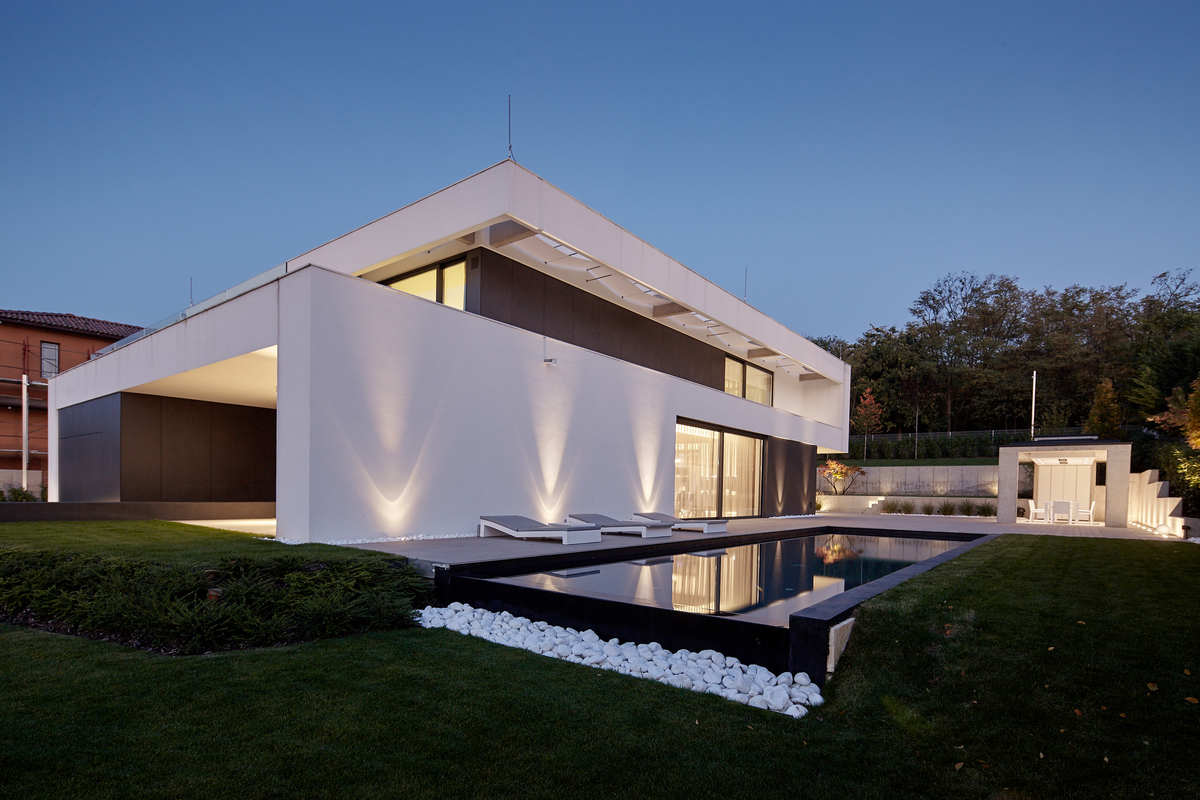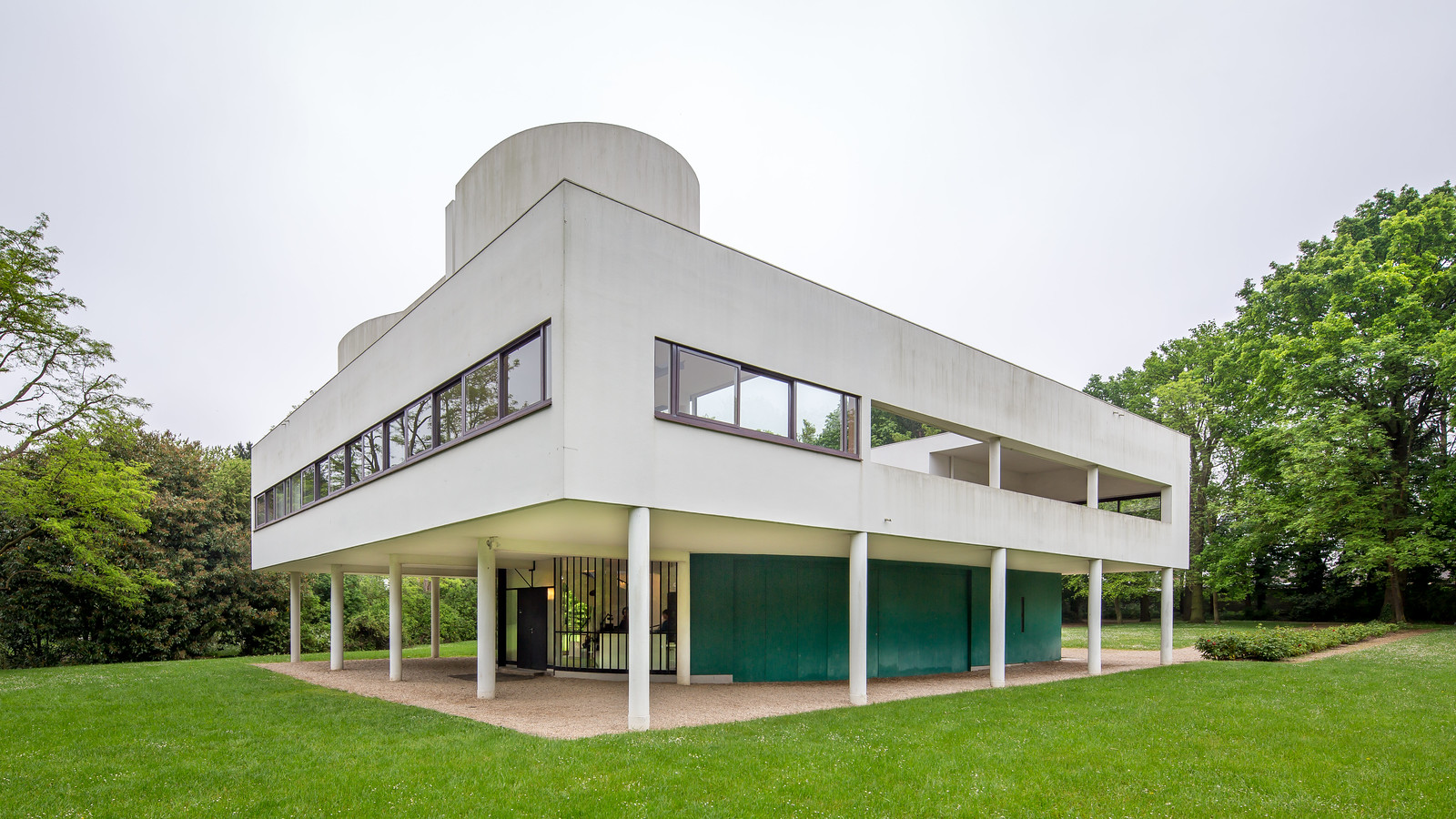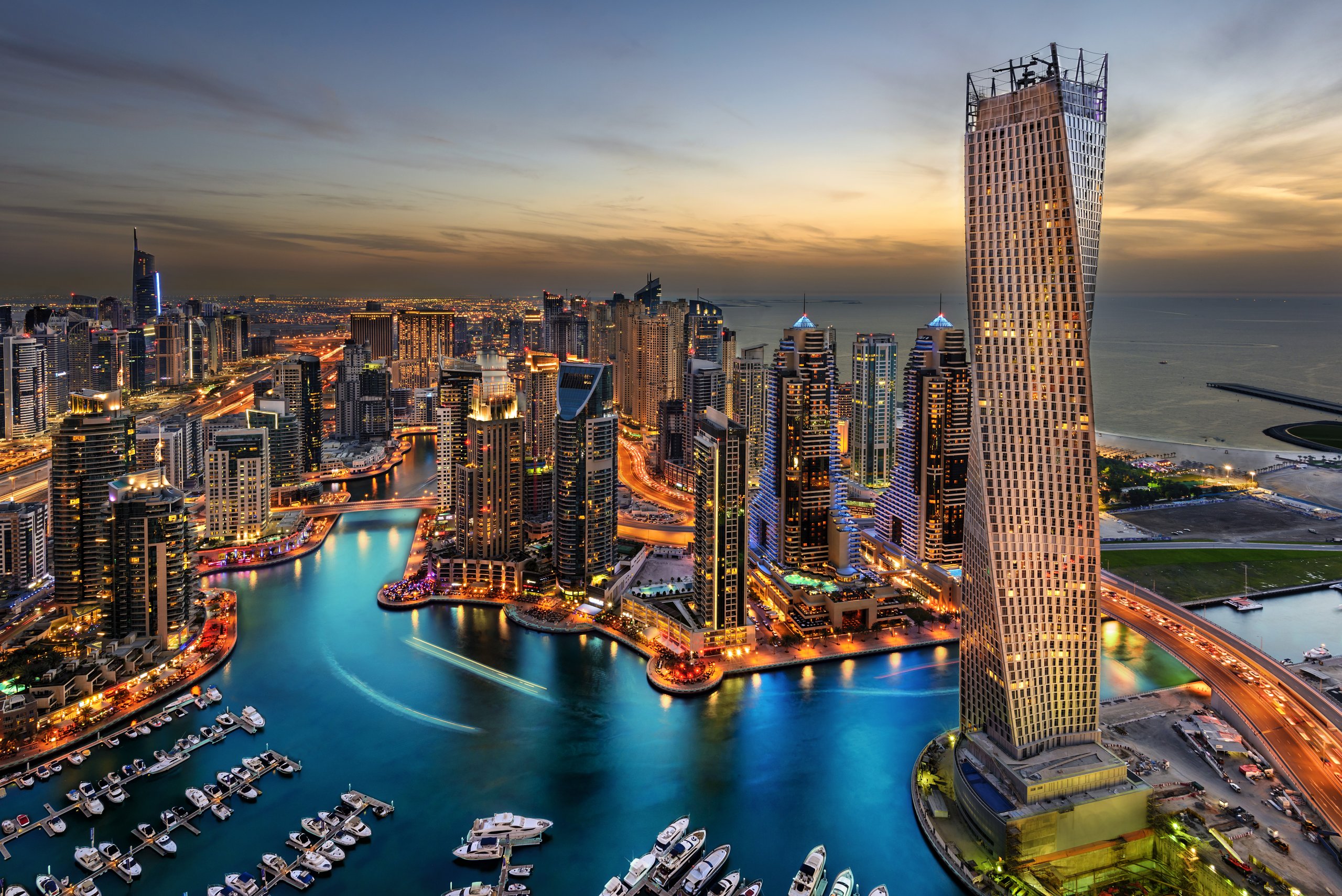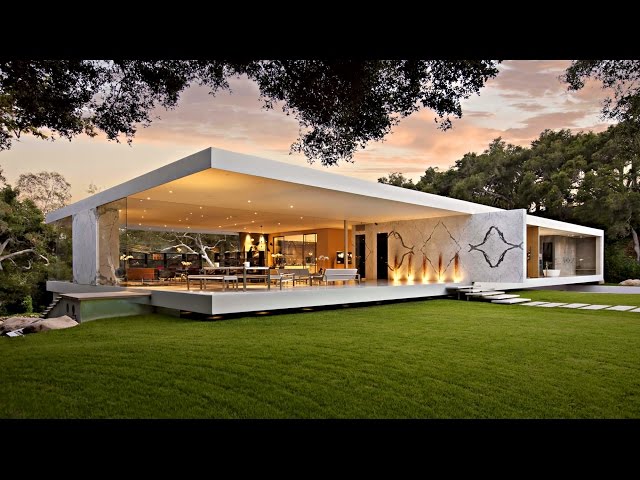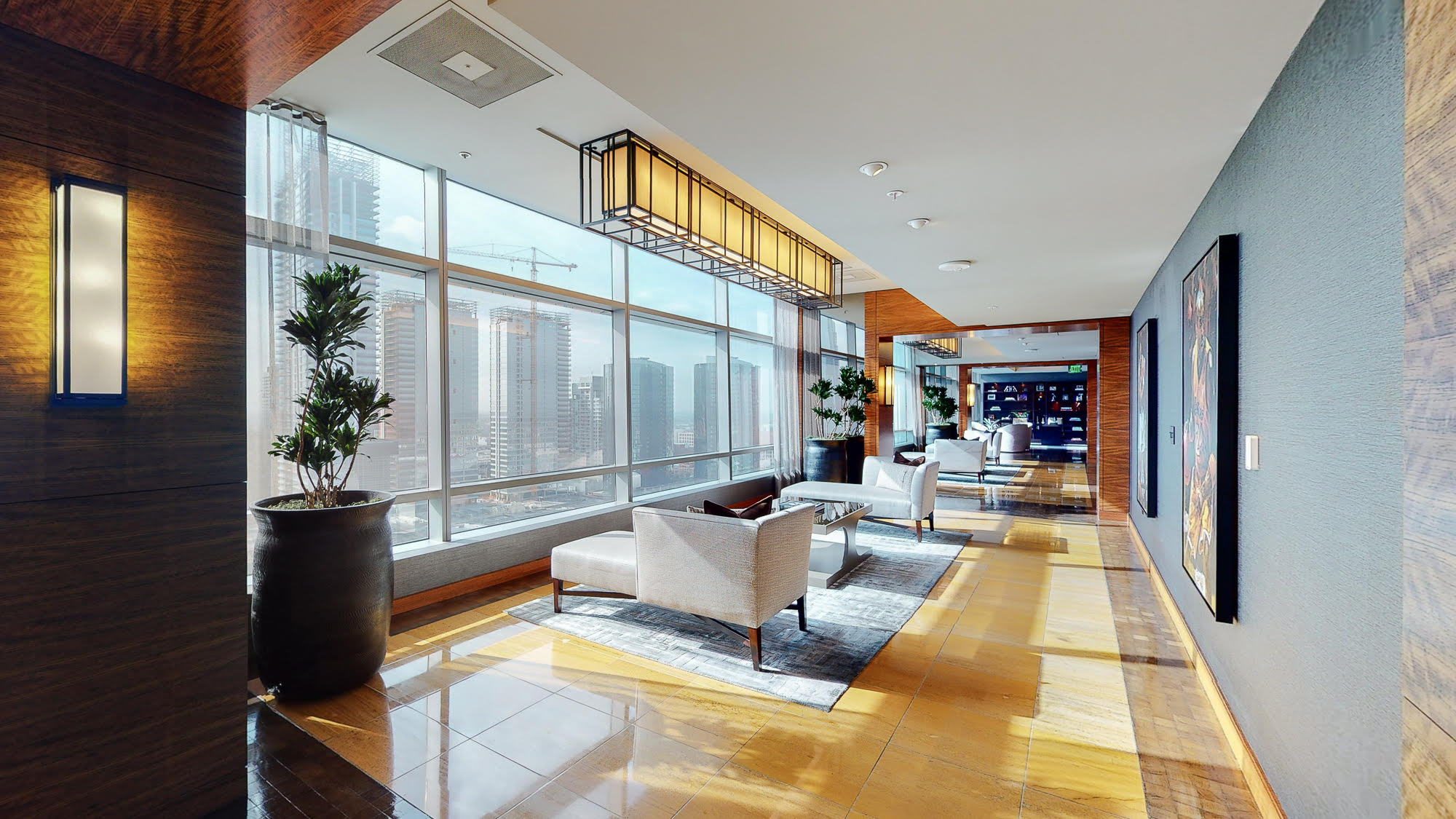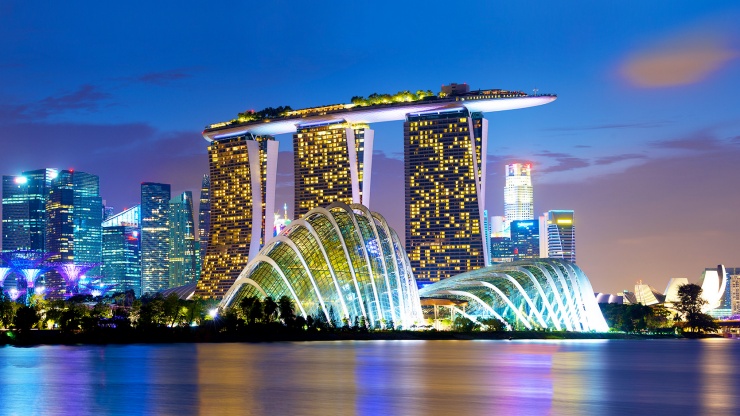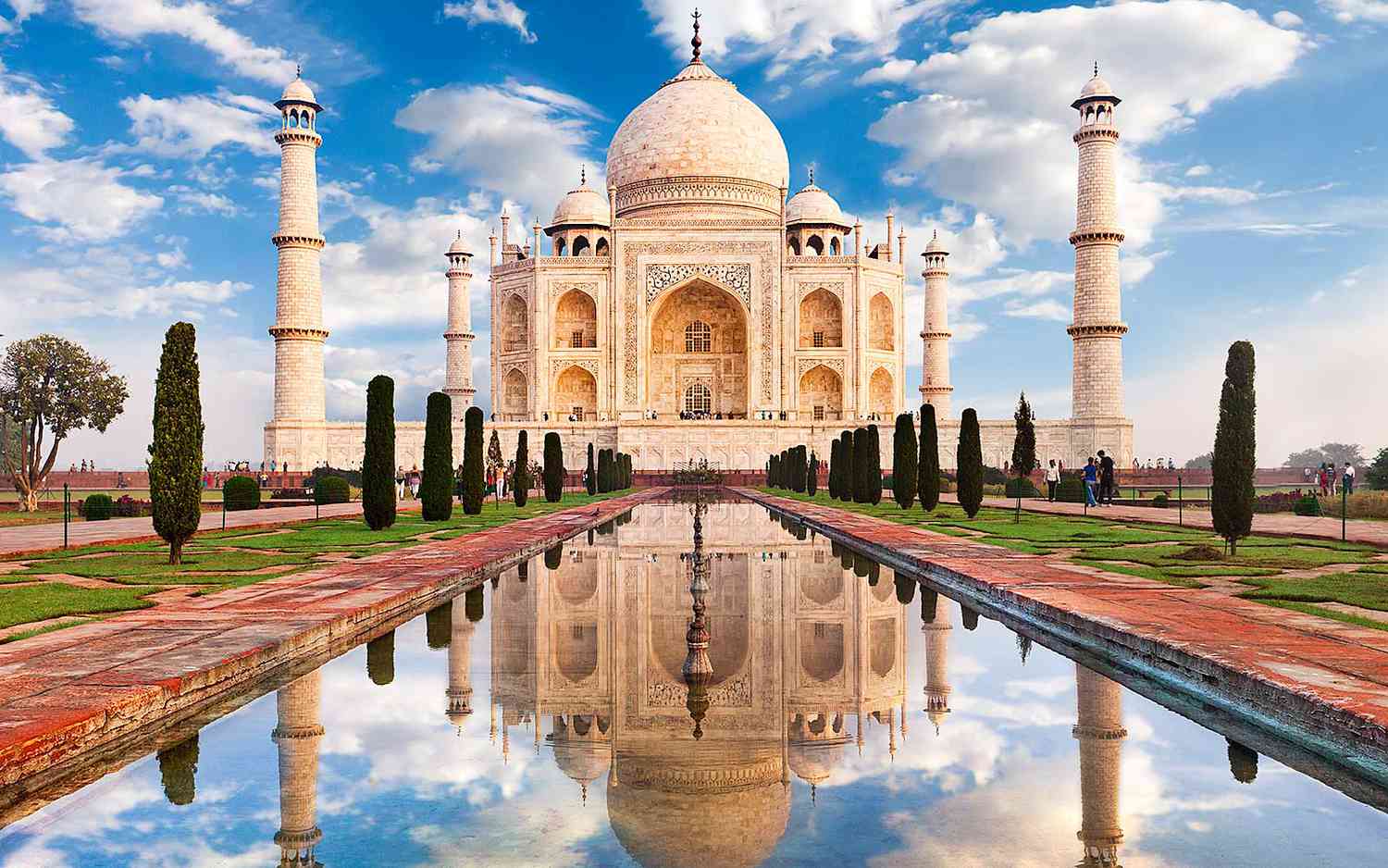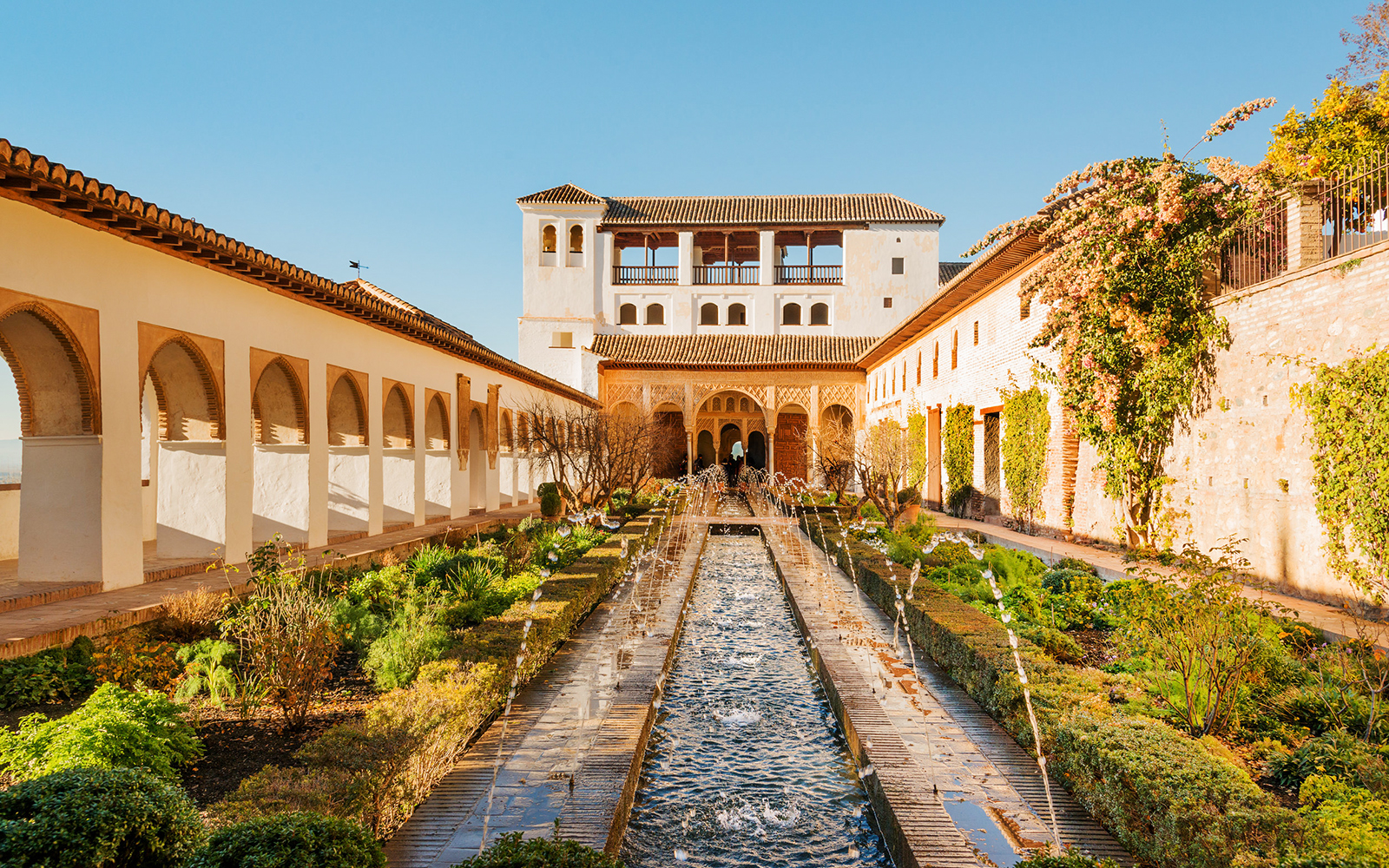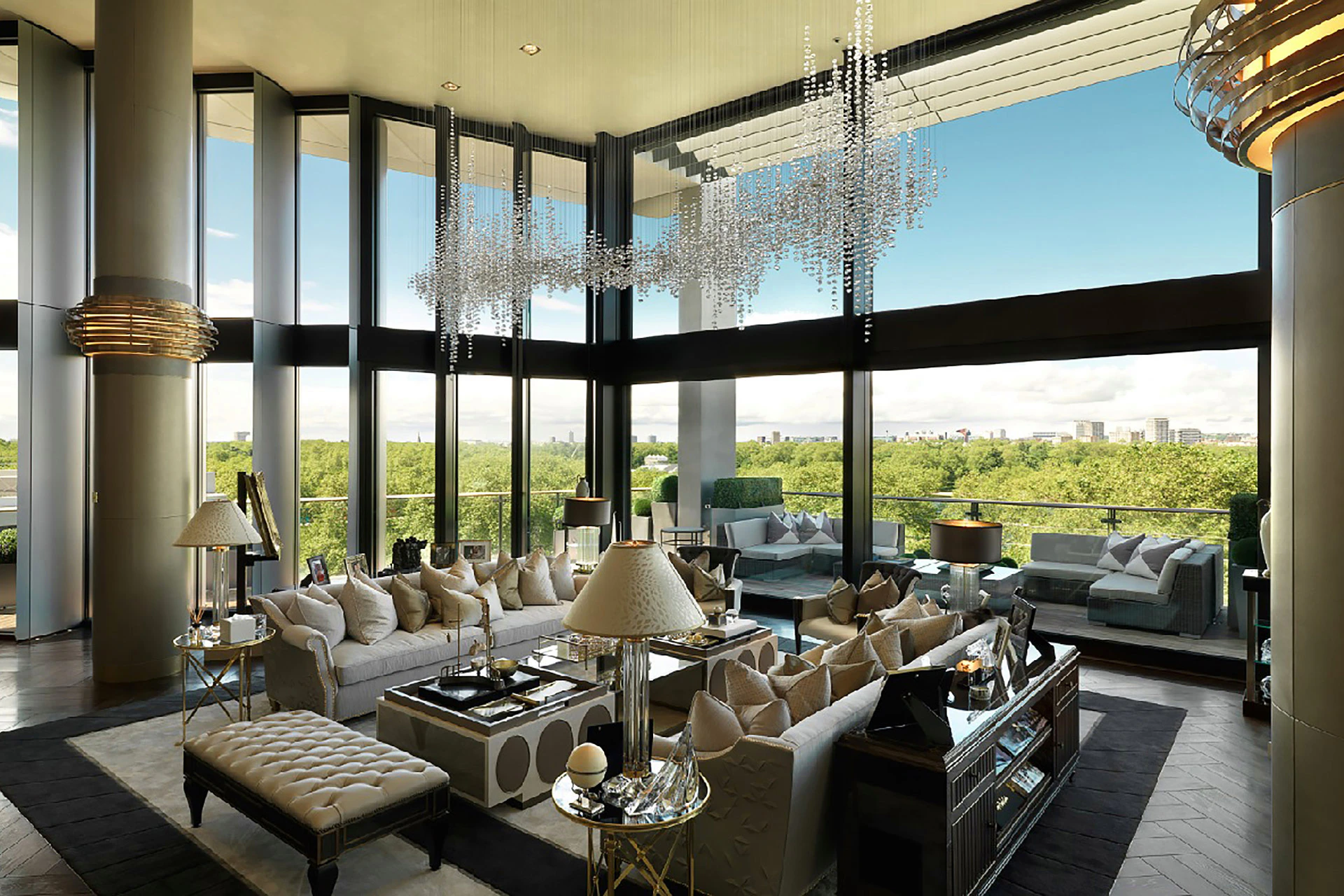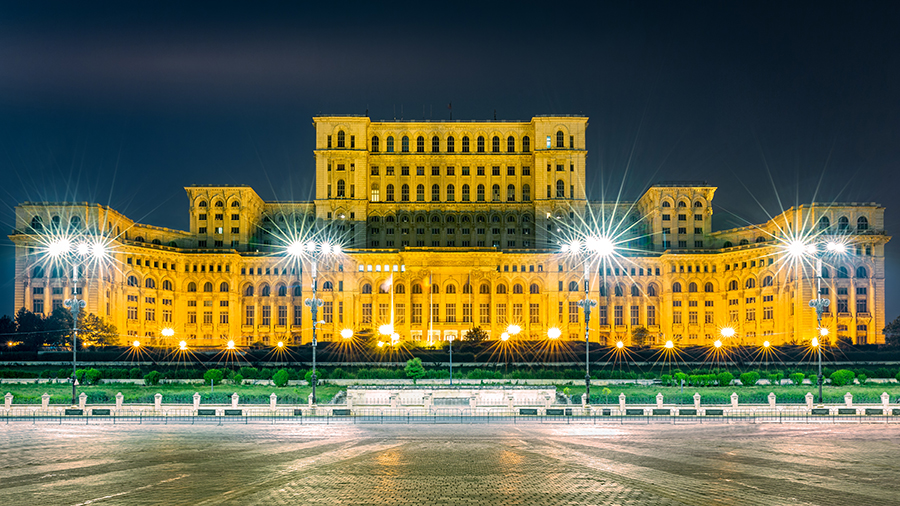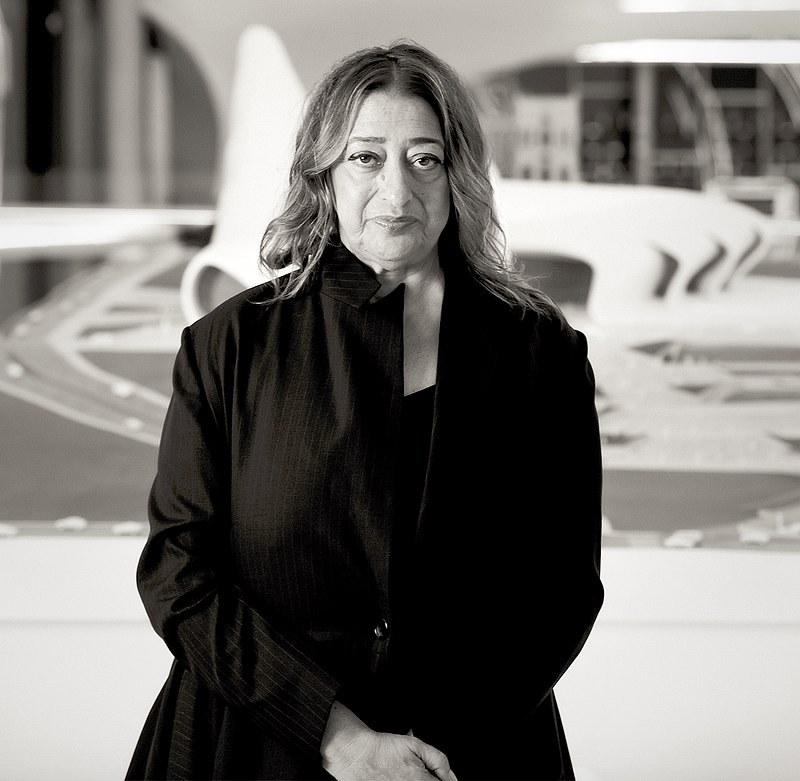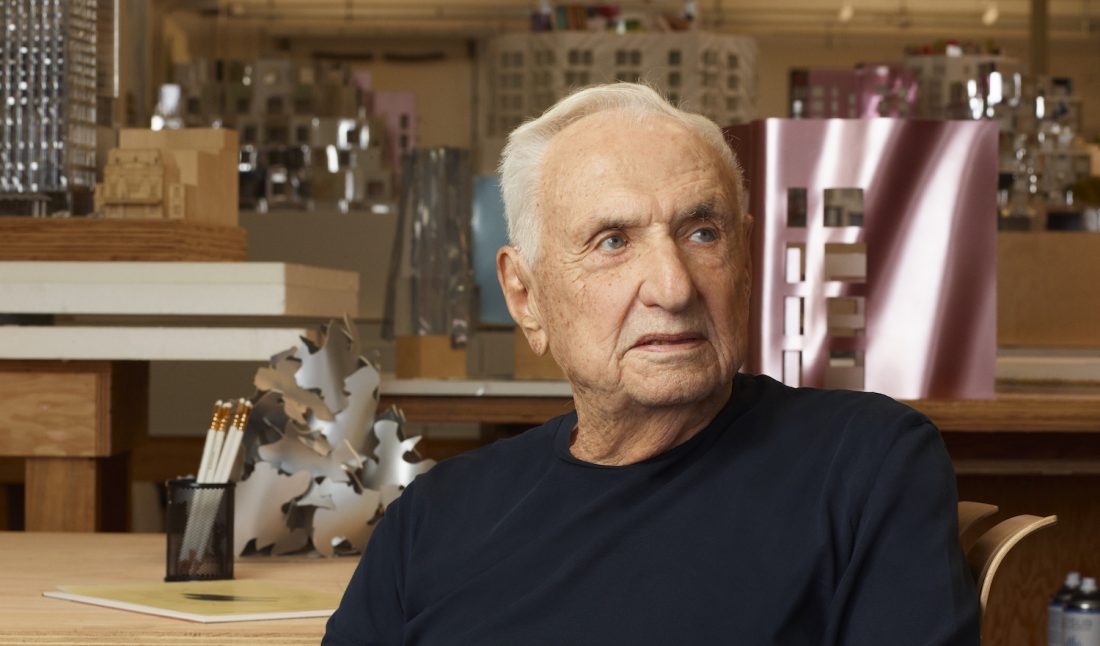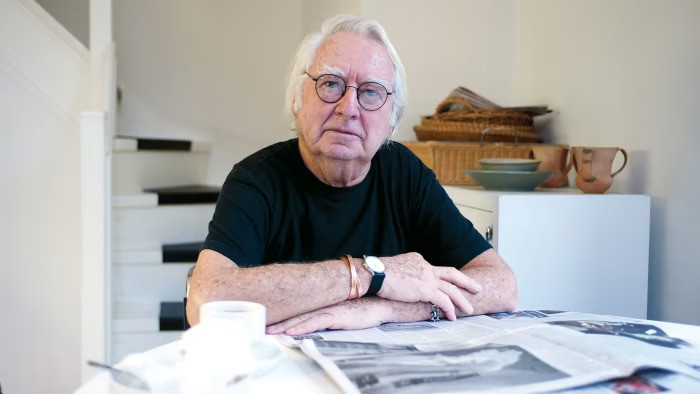Luxury Architecture | Trends & Styles You Need To Know
Unlock the latest trends and styles in luxury architecture. Learn how these cutting-edge designs are shaping the future of luxury living and find inspiration for your own dream home
Author:George EvansJul 11, 2025467 Shares93.3K Views
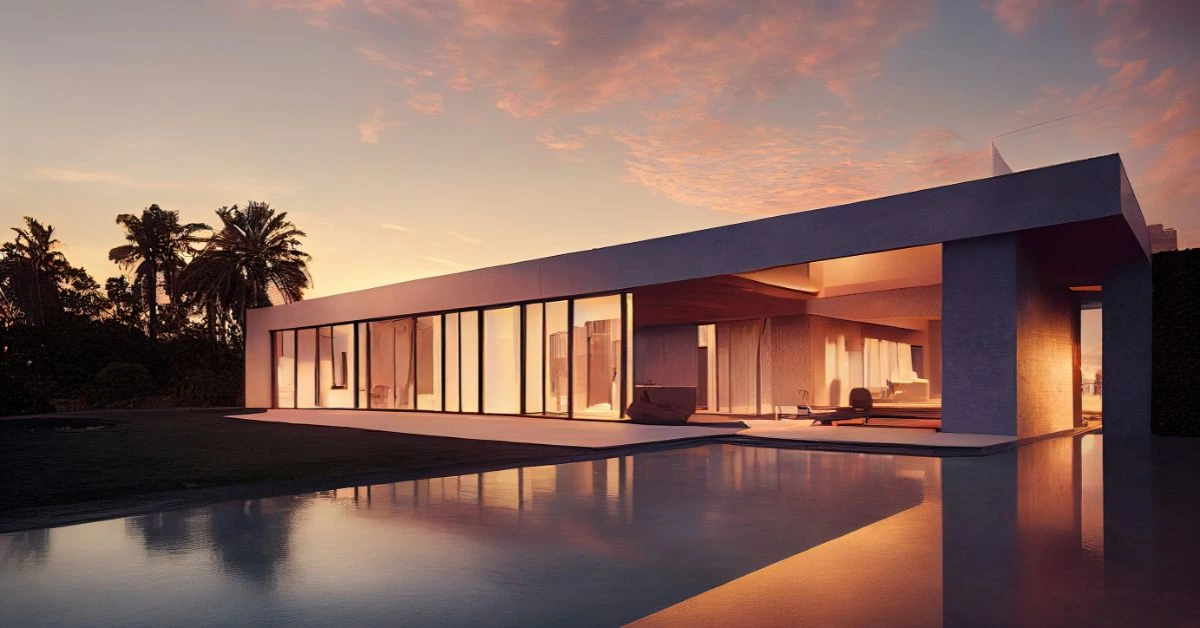
Luxurious architecture is the pinnacle of design, combining sophistication and functionality in the most amazing ways. It's an experience rather than just a place to live, combining luxury materials, state-of-the-art design, and classic styling to create rooms that radiate exclusivity, comfort, and elegance. The main components of luxury architecture, its worldwide impact, and its upcoming trends will all be covered in this article.
What Is Luxury Architecture?
Luxury architecture can be defined as the design and construction of spaces that reflect an elite standard of living. It goes beyond the typical needs of a home or building by incorporating unique design elements, high-quality materials, and advanced technology that cater to comfort, security, and prestige. Over the years, the definition of luxury has evolved.
From the grandeur of classical palaces to the minimalist beauty of modern luxury homes, architectural styles have adapted to reflect changing cultural values and technological advancements. Among these styles, Brutalist architecturestands out for its bold, utilitarian designs that prioritize functionality and raw materials, often contrasting with the refined aesthetics of traditional luxury. What remains constant is the commitment to opulence, craftsmanship, and attention to detail.
Luxury architecture isn’t just about size; it's about creating a unique environment that embodies an aspirational lifestyle. This aspirational lifestyle, while showcased here through the lens of extraordinary architectural design, is something many individuals work towards in various capacities.
Building financial independence to achieve personal goals, whether they involve dream homes or other life ambitions, often begins with exploring accessible avenues for income generation. For those interested in discovering foundational methods for enhancing their financial resources, learning how to make real money online freecan be an insightful starting point in their journey towards greater financial freedom.
Key features include spacious layouts, advanced security systems, custom designs, panoramic views, and, often, an integration of nature and the outdoors. It’s a style of architecture that speaks not only to the needs of its inhabitants but also to their desires and dreams, often becoming a significant part of celebrity net worthand luxury homes portfolios.
What Defines Luxury In Architecture?
1. Materials & Finishes
The foundation of luxury architecture lies in the use of exclusive materials that are durable and attractive. These include marble, fine woods, metals, and rare stones, all chosen for their beauty and long-lasting qualities.
For instance, marble floors, polished concrete, and timber paneling bring texture and richness to spaces. Glass is commonly used for large windows that let in plenty of natural light, connecting the inside and outside. These materials create a luxurious atmosphere while ensuring lasting quality and elegance.
2. Design Principles
Luxury homes often follow design principles that focus on balance, proportion, and grandeur. Features like open spaces, tall ceilings, and large windows make these homes feel airy and spacious.
Attention to detail is key; luxury homes often include custom-designed features like elegant staircases, intricate moldings, and handcrafted light fixtures. A combination of classic and modern styles helps create a timeless appeal that suits many tastes, ensuring every room feels special.
3. Innovative Technology
Advanced technology has become an essential part of luxury homes. Smart home systems let people control lighting, temperature, and security all from their phones or by voice command, making life easier and more convenient.
Energy-saving solutions like solar panels and geothermal heating, along with security features such as facial recognition, add to the home’s comfort and safety. These modern technologies enhance the living experience and give residents an extra layer of luxury and convenience.
4. Architectural Features
The layout and special features of luxury homes are what set them apart. Open floor plans, multiple stories, and large terraces often provide amazing views of the surrounding area. These spacious designs help create a sense of freedom and tranquility within the home.
Other luxurious features, such as infinity pools, home theaters, wine cellars, and spa-like bathrooms, make everyday life feel extraordinary. Even smaller details like custom cabinetry and designer door handles contribute to the home’s overall luxury.
5. Tailored Exclusivity
Tailored exclusivity is a key part of luxury architecture. Homes are often designed to reflect the unique tastes and needs of their owners. This could involve custom layouts, choosing special materials, or selecting one-of-a-kind furnishings.
For example, custom furniture, artwork, or home office spaces make the home feel truly personal. Exclusive services, such as concierge staff or personal chefs, are also part of the experience, ensuring everything in the home is of the highest standard.
6. Seamless Integration With Surroundings
Luxury architecture often seeks to blend the home with its environment, creating a smooth connection between the indoors and outdoors. This can be achieved with large windows that offer scenic views, open patios, and landscaping that enhances the natural beauty around the home.
Whether a house is in the mountains, by the sea, or in a city, its surroundings play an important role in its design. The goal is for the home to feel like a natural extension of the land, rather than something that disrupts the landscape.
7. Innovative Design Solutions
Innovation is a key element of luxury architecture, with designers constantly finding new ways to create homes that are functional, beautiful, and efficient. Modern solutions, such as eco-friendly designs, modular construction, and futuristic materials, are becoming more common in luxury homes.
3 Levels Of Luxury
1. Entry-Level Luxury
This level represents luxury products or experiences that are more accessible but still offer high-quality craftsmanship, exclusive branding, and premium materials. Entry-level luxury items might include mid-range designer clothing, accessories, or homes in upscale neighborhoods. They provide a taste of luxury without the extreme price tag.
Examples:
- Designer handbags or shoes from well-known brands like Michael Kors or Coach.
- Luxury cars like an Audi or BMW.
- Condominiums in well-maintained, high-end areas, but not in the most exclusive neighborhoods.
2. Mid-Level Luxury
Mid-level luxury offers a higher degree of exclusivity, better materials, and more intricate design elements. Products or services at this level often include high-end features, limited availability, and enhanced quality. These are still considered accessible to affluent individuals but go a step further in terms of refinement and sophistication.
Examples:
- High-end luxury brands like Louis Vuitton, Gucci, or Rolex.
- Luxury vehicles such as a Mercedes-Benz or Tesla.
- Homes with custom architecture, upscale interiors, and located in prime locations.
3. Ultra-Luxury
Ultra-luxury represents the pinnacle of luxury, characterized by exclusivity, rarity, and often bespoke, one-of-a-kind offerings. These are products, experiences, and services that are available to only the wealthiest individuals and often have an invitation-only or membership-based access. The price points at this level are significantly higher, and the quality is unsurpassed.
Examples:
- Limited-edition watches or jewelry from brands like Patek Philippe or Van Cleef & Arpels.
- Private jets, yachts, and one-of-a-kind vehicles like Bugatti or Rolls-Royce.
- Mansions in ultra-exclusive neighborhoods like Beverly Hills or the French Riviera, featuring advanced smart technologies, world-class amenities, and custom design elements.
Each level serves a different demographic, with the focus on quality, design, and status growing as one moves from entry-level to ultra-luxury.
Examples Of Luxury Architecture Around The World
1. Villa Savoye (France)
Designed by the legendary architect Le Corbusier, Villa Savoye is a prime example of modern luxury architecture. With its clean lines, open floor plan, and integration with nature, the villa embodies the principles of modernist design, with an emphasis on function, light, and space.
2. Burj Khalifa (Dubai)
Standing as the tallest building in the world, the Burj Khalifa is a feat of engineering and design. Its sleek, glass exterior and sky-high views make it the epitome of luxury living. The building incorporates both office and residential spaces, blending luxurious accommodations with state-of-the-art technology and services.
3. The Glass House (USA)
Designed by architect Philip Johnson, The Glass House is an iconic modernist structure that integrates indoor and outdoor spaces. This home is notable for its floor-to-ceiling glass walls, offering unobstructed views of the surrounding landscape. It exemplifies minimalism while prioritizing openness, light, and connection to nature.
4. The Ritz-Carlton Residences (Los Angeles, USA)
Located in the heart of LA, these exclusive residences offer unparalleled views of the city skyline and ocean. The architecture blends modern aesthetics with timeless luxury, offering residents a lifestyle complete with state-of-the-art amenities and curated services.
5. Marina Bay Sands (Singapore)
Marina Bay Sands is one of Singapore’s most recognizable landmarks. Its futuristic design, featuring three interconnected towers topped with an infinity pool, redefines what it means to have a luxurious living space. The building also houses a hotel, casino, shopping mall, and observation deck, creating a world-class destination.
6. The Taj Mahal (Agra, India)
Known worldwide for its breathtaking beauty, the Taj Mahal is a symbol of eternal love. This white marble mausoleum, built by Emperor Shah Jahan for his beloved wife, showcases exquisite craftsmanship with its symmetrical gardens, grand dome, and intricate carvings.
7. The Alhambra (Granada, Spain)
This historic palace complex is a stunning example of Islamic architecturewith its elegant courtyards, intricate tilework, and lush gardens. The Alhambra’s beauty is not only in its design but in the sense of tranquility it evokes, making it one of the most luxurious architectural gems in the world.
8. One Hyde Park (London, UK)
Located in the heart of London, One Hyde Parkis one of the most expensive residential buildings in the world. Its high-end apartments boast stunning views of Hyde Park, exceptional interior design, and private amenities such as a spa, pool, and 24/7 concierge service.
9. The Palace Of The Parliament (Bucharest, Romania)
The second-largest administrative building in the world, the Palace of the Parliament in Bucharest was built under the rule of Nicolae Ceaușescu. This imposing structure represents a combination of luxury and power, with lavish interiors, expansive halls, and intricate details in its design.
10. The Opus (Dubai, UAE)
Designed by the famous architect Zaha Hadid, The Opus is a groundbreaking example of luxury architecture. Its unique, fluid design, featuring a central void and a distinctive curvilinear form, makes it a standout structure in Dubai’s skyline. The building houses a mix of office spaces, luxury apartments, and a hotel, blending modernity with exclusivity.
The World’s Top Luxury Architects
1. Zaha Hadid (Zaha Hadid Architects)
Zaha Hadid was a pioneer of futuristic and fluid designs that challenged conventional architectural styles. Known for her curvaceous, organic forms, her works redefine luxury architecture with their bold, innovative approaches. Her legacy continues through Zaha Hadid Architects, which remains one of the leading firms in luxury architectural design.
Notable Works:
- The Opus (Dubai, UAE)
- Guangzhou Opera House (Guangzhou, China)
- MAXXI National Museum (Rome, Italy)
2. Norman Foster (Foster + Partners)
Sir Norman Foster’s designs are a perfect balance of elegance, modernity, and sustainability. Foster’s focus on cutting-edge technology, environmental considerations, and timeless beauty has earned him global recognition as one of the top luxury architects. His architectural style emphasizes glass, steel, and sustainability.
Notable Works:
- 30 St Mary Axe (London, UK)
- Apple Park (Cupertino, USA)
- Hearst Tower (New York City, USA)
3. Jean Nouvel (Ateliers Jean Nouvel)
Jean Nouvel is known for his innovative and artistic approach to architecture. His designs often break away from traditional forms and create visual landmarks that stand out in their respective cities. Nouvel’s work reflects a deep understanding of how architecture interacts with its environment, making his luxury designs both striking and functional.
Notable Works:
- The Louvre Abu Dhabi (Abu Dhabi, UAE)
- One Central Park (Sydney, Australia)
- Torre Agbar (Barcelona, Spain)
4. Frank Gehry (Gehry Partners)
Frank Gehry’s unconventional and sculptural approach to architecture has made him a household name in luxury design. His freeform, deconstructivist style often incorporates unexpected shapes and materials. Gehry’s work challenges the norm and creates spaces that are both visually stunning and thought-provoking.
Notable Works:
- Guggenheim Museum (Bilbao, Spain)
- Walt Disney Concert Hall (Los Angeles, USA)
- Fondation Louis Vuitton (Paris, France)
5. Richard Meier (Richard Meier & Partners Architects)
Richard Meier’s signature style combines white, minimalist facades with expansive use of natural light. His luxury designs are often defined by their purity of form and restrained elegance. Meier has been instrumental in the development of modern architecture, and his designs are known for their quiet sophistication and connection to nature.
Notable Works:
- The Getty Center (Los Angeles, USA)
- Barcelona Museum of Contemporary Art (Barcelona, Spain)
- The High Museum of Art (Atlanta, USA)
6. Tadao Ando (Tadao Ando Architect & Associates)
Known for his use of concrete, light, and water, Tadao Ando’s designs are deeply influenced by his Japanese heritage. His works emphasize simplicity, spirituality, and the relationship between the built and natural environment. Ando’s luxury homes and spaces blend functionality with serenity, creating places that encourage reflection and connection.
Notable Works:
- The Church of the Light (Osaka, Japan)
- The Modern Art Museum of Fort Worth (Fort Worth, USA)
- Naoshima Museum (Naoshima, Japan)
7. Mario Botta (Botta Design)
Mario Botta’s work is known for its strong geometric shapes, bold use of materials, and timeless elegance. Botta’s architectural designs often incorporate classical elements while embracing modern innovation, resulting in luxury structures that stand the test of time.
Notable Works:
- The San Francisco Museum of Modern Art (San Francisco, USA)
- The Theatre de la Ville (Paris, France)
- The Tinguely Museum (Basel, Switzerland)
8. Bjarke Ingels (BIG - Bjarke Ingels Group)
Bjarke Ingels combines sustainable design with futuristic concepts to create some of the most innovative luxury architecture today. His focus on playful forms, eco-friendly elements, and urban engagement has made him a leader in the field of luxury residential and commercial designs.
Notable Works:
- The 8 House (Copenhagen, Denmark)
- Cactus Towers (Copenhagen, Denmark)
- Amager Bakke (Copenhagen, Denmark)
9. Renzo Piano (Renzo Piano Building Workshop)
Renzo Piano’s architecture is known for its lightness, transparency, and integration with the natural environment. His designs emphasize elegance, modernism, and functionality, making him a leading figure in the world of luxury architecture.
Notable Works:
- The Shard (London, UK)
- Centre Pompidou (Paris, France)
- Whitney Museum of American Art (New York City, USA)
10. David Adjaye (Adjaye Associates)
Sir David Adjaye is known for creating innovative designs that reflect cultural identity and heritage while pushing the boundaries of modern luxury architecture. His work often merges art and architecture, creating unique luxury structures that blend social consciousness with elegance.
Notable Works:
- The National Museum of African American History and Culture (Washington, D.C., USA)
- The Sugar Hill Development (New York City, USA)
- The Moscow School of Management (Moscow, Russia)
What To Avoid In Luxury Interior Decor
To maintain a true luxury feel in your interior decor, there are a few things you should avoid:
Too Much Decoration: Don't overdo it with excessive decorations that might overwhelm the space. Instead, aim for simple elegance with carefully chosen details that enhance the look without being flashy.
Messy Spaces: Luxury is all about spaciousness and order. Avoid clutter and choose furniture and decor that are not only functional but also look beautiful, helping to create a sense of wealth and style. Make sure to include plenty of storage!
Bad Lighting: Lighting is key to creating a luxurious atmosphere. Avoid using harsh lights. Instead, choose a mix of lighting types, like soft background lights, focused task lighting, and special accent lights. Consider using adjustable lighting to match the mood for different occasions, making the space feel welcoming and warm.
The Role Of Sustainability In Luxury Architecture
In recent years, sustainability has become a key focus in the world of luxury architecture. While luxury homes are often associated with excessive resources and energy use, many architects are turning to eco-friendly solutions to make these spaces both luxurious and sustainable.
Eco-Friendly Materials And Design
Sustainable luxury homes often use recycled or locally sourced materials, reducing environmental impact without sacrificing quality. Green roofs, energy-efficient windows, and solar panels are becoming standard features in luxury homes.
Energy Efficiency And Technology
Technology plays a critical role in making luxury homes energy-efficient. Smart heating and cooling systems, LED lighting, and energy-efficient appliances reduce the carbon footprint of these homes while maintaining the highest standards of comfort and luxury.
The Future Of Sustainable Luxury Homes
The integration of sustainability with luxury design is expected to grow in the coming years. With the push towards carbon neutrality, the demand for luxury homes that use sustainable resources and eco-friendly construction methods will continue to rise.
How Luxury Architecture Enhances Quality Of Life
One of the key benefits of luxury architecture is its ability to enhance the quality of life for its inhabitants. When designed correctly, luxury homes promote well-being and provide an environment of peace, relaxation, and comfort.
1. Mental And Physical Well-Being
Luxury homes often feature elements like natural light, open spaces, and access to outdoor environments, all of which contribute to mental health and well-being. Expansive windows that bring the outdoors in, indoor gardens, and private outdoor spaces offer a sanctuary from the bustle of daily life.
2. Exclusive And Private Living
The desire for privacy and exclusivity is central to luxury architecture. Large estates, gated entrances, and secure properties allow residents to enjoy their luxurious spaces without the intrusion of the outside world. It’s not just about owning a beautiful spaceit’s about creating a personal oasis where one can unwind, relax, and recharge.
Future Trends In Luxury Architecture
The future of luxury architecture is bound to be exciting, with technological advancements and sustainability driving much of the innovation.
Biomimicry And Futuristic Design
Designers are increasingly looking to nature for inspiration. Biomimicry designing structures that mimic natural forms and processes is a growing trend. These buildings not only look futuristic but are designed to blend seamlessly with the environment.
Virtual And Physical Spaces
As technology continues to evolve, so too will the ways in which we interact with our homes. Virtual reality (VR) and augmented reality (AR) are already being incorporated into luxury homes, offering immersive experiences that were previously unimaginable. This could include virtual art displays, remote-controlled environments, or simulated outdoor experiences indoors.
AI And Robotics In Construction
AI and robotics are transforming the way luxury homes are designed and built. From automated construction processes to AI-assisted interior design, these technologies make building luxury homes faster, more efficient, and more precise. At the same time, green technology and renewable energy in sustainable architecturehave become critical focal points. Incorporating solar panels, energy-efficient systems, and sustainable materials into luxury designs not only reduces the environmental impact but also enhances the long-term value and appeal of these homes.
FAQs
What Is The Difference Between Regular Architecture And Luxury Architecture?
Luxury architecture focuses on creating exclusive, high-end spaces with unique design features and materials. It often includes bespoke elements, advanced technology, and custom finishes that aren’t found in regular homes.
Who Is The Billionaire Architect?
Lord Norman Foster is the most prosperous architect in the world, with a net worth of $240 million. He founded his well-known architectural firm Foster + Partners back in 1967, and he is known for his sleek glass and steel structures.
What Is The Highest Position In Architecture?
As one of the highest roles in architectural practice, Principal Architects are often firm owners or partners. They have overarching responsibility for design philosophy, firm management, and often engage in industry thought leadership.
What Is The Richest Type Of Architect?
Top 10 Highest Paying Architect Careers
- 1) Preservation Architect.
- 2) Architectural Technologist.
- 3) Architectural Designer.
- 4) Landscape Architect.
- 5) Green Building & Retrofit Architect.
- 6) Commercial Architect.
- 7) Industrial Architect.
- 10) Extreme Architect.
Conclusion
Building residences is only one aspect of luxury architecture; another is designing environments that evoke an exclusive, elegant, and cozy way of life. The future of luxury residences will undoubtedly be even more remarkable as sustainability and technology continue to improve, combining cutting-edge designs, eco-friendly procedures, and sophisticated technologies.
Luxury architecture will always be an ideal objective for individuals who want the highest level of design, providing the best in terms of both looks and quality of life.
Jump to
What Is Luxury Architecture?
What Defines Luxury In Architecture?
3 Levels Of Luxury
Examples Of Luxury Architecture Around The World
The World’s Top Luxury Architects
What To Avoid In Luxury Interior Decor
The Role Of Sustainability In Luxury Architecture
How Luxury Architecture Enhances Quality Of Life
Future Trends In Luxury Architecture
FAQs
Conclusion

George Evans
Author
George Anderson, an exceptional architectural designer, envisions and brings to life structures that transcend the realm of imagination. With an unwavering passion for design and an innate eye for detail, George seamlessly blends form and function, creating immersive spaces that inspire awe.
Driven by a deep appreciation for the interplay of space, light, and materials, George's innovative approach redefines the possibilities of architectural design. His visionary compositions leave an indelible mark, evoking a sense of wonder and transforming the built environment.
George Anderson's transformative designs and unwavering dedication continue to shape the architectural landscape, pushing the boundaries of what is possible and inspiring generations to come.
Latest Articles
Popular Articles
